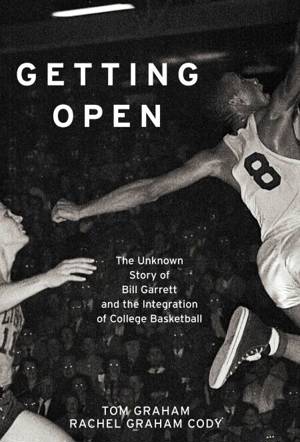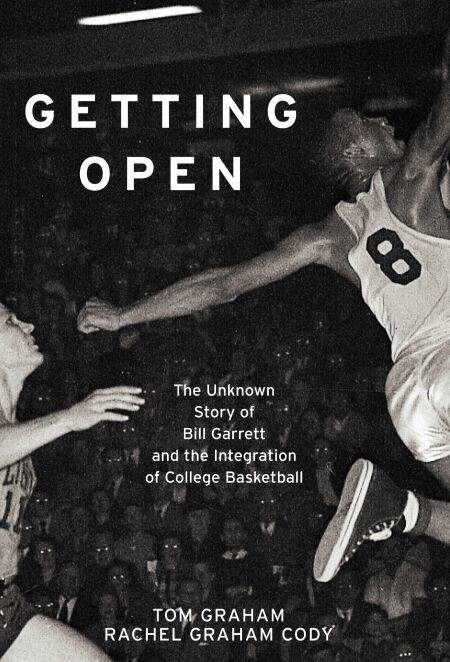
- Retrait gratuit dans votre magasin Club
- 7.000.000 titres dans notre catalogue
- Payer en toute sécurité
- Toujours un magasin près de chez vous
- Retrait gratuit dans votre magasin Club
- 7.000.0000 titres dans notre catalogue
- Payer en toute sécurité
- Toujours un magasin près de chez vous
Getting Open EBOOK
The Unknown Story of Bill Garrett and the Integration of College Basketball
Tom Graham, Rachel Graham Cody
Ebook | Anglais
15,65 €
+ 15 points
Description
"A striking and honest portrait of a man overcoming racism in a place that barely acknowledged its existence." —Publishers Weekly
Bill Garrett was the Jackie Robinson of college basketball. In 1947, the same year Robinson broke the color line in major league baseball, Garrett integrated big-time college basketball. By joining the basketball program at Indiana University, he broke the gentleman's agreement that had barred black players from the Big Ten, college basketball's most important conference. While enduring taunts from opponents and pervasive segregation at home and on the road, Garrett became the best player Indiana had ever had, an all-American, and, in 1951, the third African American drafted in the NBA. In basketball, as Indiana went so went the country. Within a year of his graduation from IU, there were six African American basketball players on Big Ten teams. Soon tens, then hundreds, and finally thousands walked through the door Garrett opened to create modern college and professional basketball. Unlike Robinson, however, Garrett is unknown today.
Getting Open is more than "just" a basketball book. In the years immediately following World War II, sports were at the heart of America's common culture. And in the fledgling civil rights efforts of African Americans across the country, which would coalesce two decades later into the Movement, the playing field was where progress occurred publicly and symbolically.
Indiana was an unlikely place for a civil rights breakthrough. It was stone-cold isolationist, widely segregated, and hostile to change. But in the late 1940s, Indiana had a leader of the largest black YMCA in the world, who viewed sports as a wedge for broader integration; a visionary university president, who believed his institution belonged to all citizens of the state; a passion for high school and college basketball; and a teenager who was, as nearly as any civil rights pioneer has ever been, the perfect person for his time and role. This is the story of how they came together to move the country toward getting open.
Father-daughter authors Tom Graham and Rachel Graham Cody spent seven years reconstructing a full portrait of how these elements came together; interviewing Garrett's family, friends, teammates, and coaches, and digging through archives and dusty closets to tell this compelling, long-forgotten story.
Bill Garrett was the Jackie Robinson of college basketball. In 1947, the same year Robinson broke the color line in major league baseball, Garrett integrated big-time college basketball. By joining the basketball program at Indiana University, he broke the gentleman's agreement that had barred black players from the Big Ten, college basketball's most important conference. While enduring taunts from opponents and pervasive segregation at home and on the road, Garrett became the best player Indiana had ever had, an all-American, and, in 1951, the third African American drafted in the NBA. In basketball, as Indiana went so went the country. Within a year of his graduation from IU, there were six African American basketball players on Big Ten teams. Soon tens, then hundreds, and finally thousands walked through the door Garrett opened to create modern college and professional basketball. Unlike Robinson, however, Garrett is unknown today.
Getting Open is more than "just" a basketball book. In the years immediately following World War II, sports were at the heart of America's common culture. And in the fledgling civil rights efforts of African Americans across the country, which would coalesce two decades later into the Movement, the playing field was where progress occurred publicly and symbolically.
Indiana was an unlikely place for a civil rights breakthrough. It was stone-cold isolationist, widely segregated, and hostile to change. But in the late 1940s, Indiana had a leader of the largest black YMCA in the world, who viewed sports as a wedge for broader integration; a visionary university president, who believed his institution belonged to all citizens of the state; a passion for high school and college basketball; and a teenager who was, as nearly as any civil rights pioneer has ever been, the perfect person for his time and role. This is the story of how they came together to move the country toward getting open.
Father-daughter authors Tom Graham and Rachel Graham Cody spent seven years reconstructing a full portrait of how these elements came together; interviewing Garrett's family, friends, teammates, and coaches, and digging through archives and dusty closets to tell this compelling, long-forgotten story.
Spécifications
Parties prenantes
- Auteur(s) :
- Editeur:
Contenu
- Nombre de pages :
- 272
- Langue:
- Anglais
Caractéristiques
- EAN:
- 9780743299244
- Date de parution :
- 21-02-11
- Format:
- Ebook
- Protection digitale:
- Adobe DRM
- Format numérique:
- ePub

Les avis
Nous publions uniquement les avis qui respectent les conditions requises. Consultez nos conditions pour les avis.






